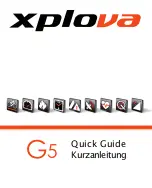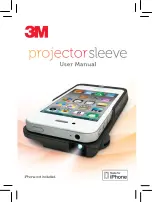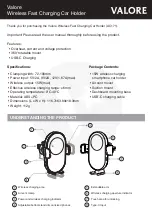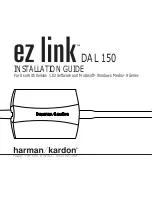
PN# 500-18000
Page 5
Rev. D, 10/11
FIG. 7: WIRING WITH INTEGRATED PUSH BUTTON AND TIMER (EEB2, EEB3N)
12-28 VDC
POWER
SUPPLY
+
-
MAGNETIC LOCK
+
-
+
-
XMS
REX
INPUT
C
NC
ACCESS SYSTEM LOCK
CONTROL RELAY
R
ED
GRN
BLK
USE 1/2 SECOND TIME
SETTING WITH ACTIVE REX
(SEE SECTION 5)
IN+ D VICE
C1 NC1 NO1
EEB2, EEB3N
PUSH BUTTON
WH
T
4. BASIC OPERATION
When the XMS is first powered, its LED will flash twice quickly every second for about 40
seconds. This is a self test and also permits the XMS to adjust itself to the thermal
environment that it “sees”. After this start up period, the LED will stay green. If the self test
fails during the start up period, the LED will begin to flash at four times per second. This failure
indication will continue indefinitely. If you see it, de-power the unit for about 30 seconds and
then re-power it. If the failure indication occurs again, replace the unit. During the self test
period the unit’s control outputs are in their “normal” conditions (lock control-conducting; REX-
relay deenergized).
In the event of a very brief power outage, the unit will not self test for 40 seconds but will
undergo a self test of 10 seconds before resuming normal operation. Note that the self test on
power up feature of the unit is the main reason why the XMS must receive constant power.
With the jumpers in factory set condition and the unit past its self test, it will detect moving
objects at a different temperature than ambient. It will signal this detection by switching its LED
from green to red. The LED actually mirrors the state of the REX relay rather than the lock
control transistor.
You need to understand how the unit’s control outputs operate in a detection event. In the rest
condition (green LED on; no detection), the lock control transistor is conducting and the
REX relay is deenergized. When an object is detected, the REX relay energizes immediately.
This is to shunt alarm contacts or send a REX signal to an access control system. Fifty
milliseconds later, the lock control transistor switches off which releases the magnetic lock.
This brief delay is to make sure that the access control system has processed the REX signal so
that it won’t alarm if it is also reading lock status detection such as Securitron’s Senstat feature.
A lock status signal will change state as soon as the lock is de-powered.
In factory set condition, the lock control transistor will remain off for four seconds after detection
has ceased (keeping the lock released). If, during the four seconds, the object moves again, the
detection condition will be maintained for another four seconds after this “new” detection ceases.
For the magnetic lock to resecure, four seconds must pass with no detection. This trailing
edge timing feature is for egress safety and reliability. Otherwise, it is possible for a person to
approach the door (thereby activating the XMS) but then stop moving for a brief moment at the
door. The detector would then reset and if the person then quickly lunged into the door he could
receive a bump as his motion could be quicker than the response of the detection to this new
movement. The four second timing feature virtually eliminates this potential problem. Another
operational safety feature is the fact that if power is cut to the XMS, the lock safely releases
so that a person wishing to exit is not trapped.


























